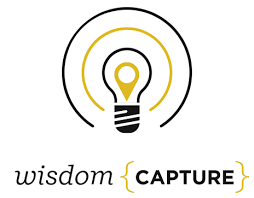
KNOWLEDGESTREAM AT-A-GLANCE
Capturing Knowledge to Empower Future Leaders and Employees
ABSTRACT
We believe that US companies are missing out on the tacit knowledge and accumulated wisdom embedded in the minds of their leaders at all levels. This knowledge needs to be captured, distilled and then shared with other team members. Team members also need the tools to enable the exchange of ideas and suggestions with peers. Management needs to be able to track this activity and rest secure in the data-driven evidence that having wiser people and a stronger culture leads directly to better business results. We also believe that the lack of such a “wisdom economy” in most organizations contributes directly to the continuously disappointing employee engagement levels reported by Gallup every year. We would like to dive deep into this perceived “wisdom gap”. The following are our initial questions for the panel to explore (THEMES): - What is the overall “state of play” of management development efforts in US business firms? - What are the roots of the persistent employee engagement problem within the US business community (e.g. Gallup)? - To what extent do US companies train their emerging leaders on the so-called “soft skills” like leadership, decision-making, and interpersonal effectiveness? - How are companies capturing the insights of senior and/or soon-to-retire senior leaders as a way of empowering their emerging leaders? - To what extent are companies engaging their emerging leaders to impact decision-making? - What educational tools are companies using to support emerging leaders regarding issues and challenges associated with age, gender and race? - How are companies using digital tools to narrow down the age “gaps” of the five generations present in today’s workforce? - What are the barriers to full commitment to effective management and leadership development within US companies?
PARTICIPANTS















OBJECTIVES
1. : Distill relevant trends and factors and identify relevant examples.
2. : Identify the range of needed capabilities and understand the feasibility of each.
3. : Create a capability roadmap priority of importance and feasibility.
4. :
End Date: Oct 29, 2018
CONTRIBUTIONS
ACTIVITY
126 Days
4 Themes
34 Contributors
729 Posts
500 Comments
150 Followers
OUTPUTS
3 Slide Deck
2 Video
THEME #1
Welcome to the Wisdom Capture Development board!
THEME SUMMARY
We have enjoyed reading the comments from the panel and are also absolutely sure that we have a great group of experts engaged in this endeavor.
- So far, the comments regarding the state of play in management development have largely confirmed our initial hypotheses although there have been some notable points made as dialogue has progressed.
- The workforce in general is disengaged, training is lackluster, and performance reviews are often more punitive than productive.
In the future, employee performance reviews will tend to be less formal and more frequent.
We have shifted from annual formalized feedback to real-time performance input, sometimes provided by managers, peers and subordinates through apps. This has improved productivity and employee satisfaction. There is also a trend towards individual learning and training, again more real-time focused.
I agree with the observations mentioned by the other panelists here, and have been on a “constructive feedback is a gift” kick lately, part of my quest to abolish the annual performance review in favor of real-time dialogue between managers and their team members.
"People analytics" is more and more recognized as an important metric, however it is still far from being wholly adopted. Execs are tending toward better ways of collection/interpretation of data.
"People analytics" is now a business discipline, supporting everything from operations and management to talent acquisition and financial performance. Only 8% of organizations report they have usable data, while only 9% believe they have a good understanding of the factors that drive performance.
In 2016, 57% of respondents said Learning & Development (L&D) would be a strategic priority for the next 3 years . In 2018, only 30% said this had in fact occurred. Line of Business (LOB) execs are uncertain about leadership development excellence, compared to L&D peers
Personal experience and real-world statistics suggest that in many ways the development/training environment is actually moving backwards as the years go on. Technology may play a key role in this.
Not only did I receive leadership training some 15 years ago, we also had training and development on effective teams, importance of diversity, and conflict management. This seems to have disappeared and we are back to the dark ages.
Business productivity has not kept pace with technological progress. Data from the US Bureau of Labor Statistics and other sources show that productivity growth remains low despite the introduction of new technology into the business environment.
THEME #2
What are the roots of the persistent employee engagement problem within the US business community?
THEME SUMMARY
Severely low levels of employee engagement stem from a variety of reasons, including low levels of of trust, low collective representation, misaligned incentives, and poor development from leadership.
- Employees don’t feel appreciated, understood, heard, and valued. Leadership has to take the lion's share of the responsibility.
- Too much emphasis has been placed on what is most important in the moment, rather than embracing the importance of what is important for long term growth and success of employees and the business.
Employers fail to create the proper motivating factors for employee engagement.
Many companies still believe that money is the best employee motivator. Behavioral science shows that this could not be further from the truth. In fact monetary rewards may crowd out intrinsic motivation and turn what was supposed to be a reward into a pattern of needed bribes.
From my experience employees become disengaged when they are aren't being motivated to become a better person and improve their skills and education thus they need constant learning and growth to reach their goals. Desired outcomes come from goal setting and finding out what the employee wants...
Employees have an ever decreasing amount of trust in their organization’s overall ecosystem.
[Trust] is the core of employee-management relationships. Micro-management happens when there is lack of trust. [...] If management does not understand the value of gaining trust and expects employees to obey them purely because of rank, employee engagement will not be high.
[Without trust,] creativity is stifled, innovation grinds to a halt, and out-of-the-box thinking is abandoned. People check their hearts at the door, even as their minds move forward on the task at hand. My definition of trained disengagement.
Rigidity in workplace organizational infrastructure, including politics, process, and communication, is stifling employees' creativity and sense of purpose.
The problem is that employee engagement is about connections and relationships. [...] Too many employees feel unappreciated and even worse on a daily basis making the programs that companies put into place feel shallow and almost patronizing.
I have seen team members demotivated because of too high of content of political speak. The organization shows little desire to fix things, opting rather to use platitudes and obfuscation, so the organization remains in a broken place. The broken place and the political attitude can damage morale.
Leadership is at best unaware or at worst unappreciative of the gravity of the effect that their behavior has on employees–for better or for worse.
If we start the giving process to our employees, they will then have the motivation to return the favour. Don't expect your employees to do everything. You are their leader, so show some leadership.
A recent Deloitte study shows: “For younger workers, the gap is widening between what responsible companies should achieve and what businesses' actual priorities are.” [...]Millennials look more for meaning and purpose in life [and] work, and are disappointed in their employees’ true motives.
THEME #3
To what extent do US companies train their emerging leaders on the so-called “soft skills” like leadership, decision-making, and interpersonal effectiveness?
THEME SUMMARY
US Companies train their employees in a number of ways and with varying degrees of success. The implementation of the training and its relevance to company culture is paramount to a successful program
- Training is delivered via classroom and tech. Coaching is one-on-one and tech, sometimes together.
- It’s important that various level management observe emerging and potential management and leadership by personal oversight and attendance.
We must not underestimate the implementation of Training, Education, and Development.
While basic “training” and education are provided - rarely online - we find that industry relevant case studies and workshops translate that into tangible experiences that resonate & embed the training. Most find it immensely enjoyable, love the high level of interaction & friendly team competition.
Today's technology development allows for realtime conversations. Telepresence is designed to include the human element as it is realtime, has no latency and as such getting very close to being all in the same room. All in all, a combination of both online and offline seems to have the best impact.
A company's culture plays massive role in the effectiveness of training and development of soft skills.
Some organizations encourage soft skill training when there is a problem. A talented leader may get the work done but in a less than desirable way. Proactive development ensures there is common understanding of priority skills and understanding of why these are important to an organization.
...training is not a checklist or a task accomplished, more an engagement that continues to build a learning culture, as every talent irrespective of a potential leader or an individual contributor, learning should be a continual process.
THEME #4
The Shape of the Employee Engagement Solution










